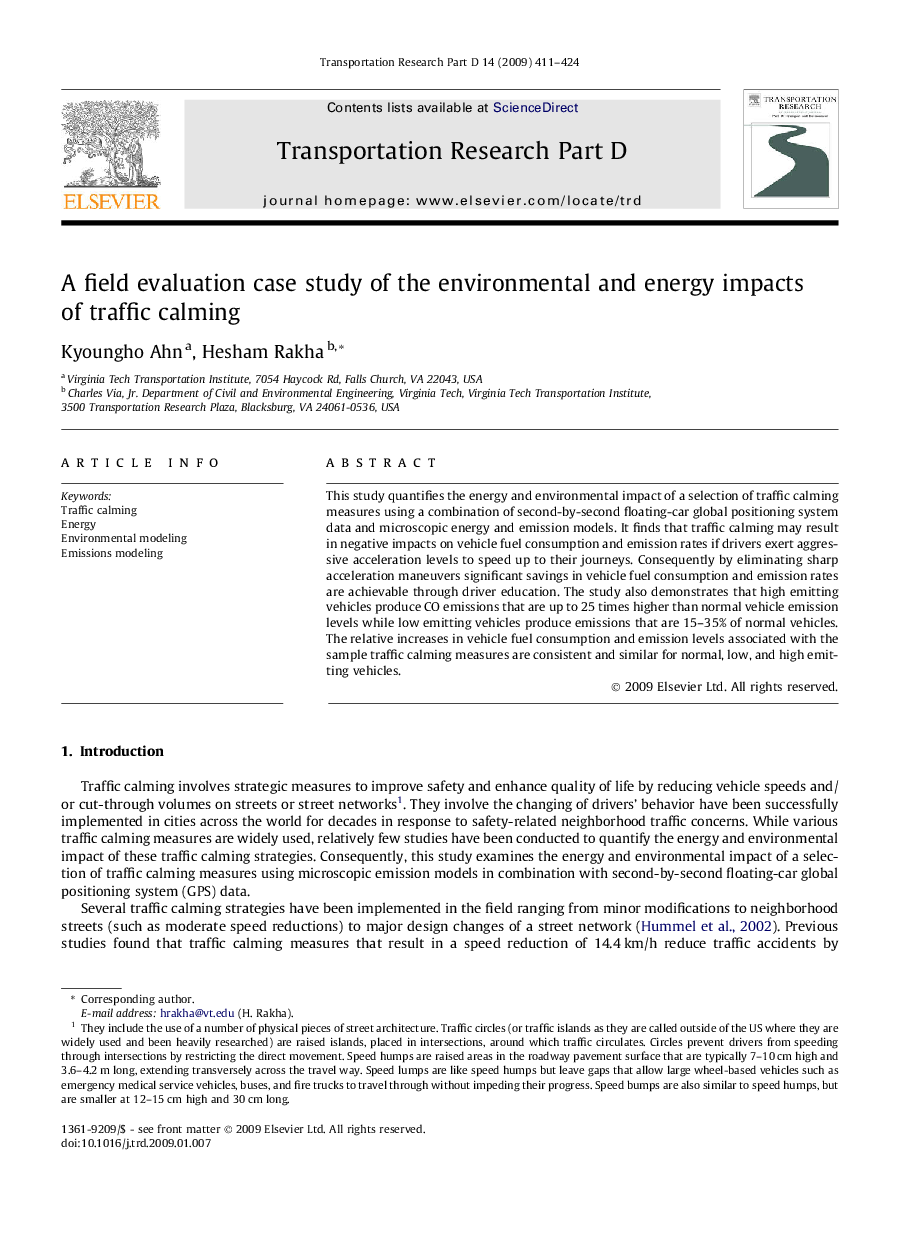| Article ID | Journal | Published Year | Pages | File Type |
|---|---|---|---|---|
| 1066033 | Transportation Research Part D: Transport and Environment | 2009 | 14 Pages |
This study quantifies the energy and environmental impact of a selection of traffic calming measures using a combination of second-by-second floating-car global positioning system data and microscopic energy and emission models. It finds that traffic calming may result in negative impacts on vehicle fuel consumption and emission rates if drivers exert aggressive acceleration levels to speed up to their journeys. Consequently by eliminating sharp acceleration maneuvers significant savings in vehicle fuel consumption and emission rates are achievable through driver education. The study also demonstrates that high emitting vehicles produce CO emissions that are up to 25 times higher than normal vehicle emission levels while low emitting vehicles produce emissions that are 15–35% of normal vehicles. The relative increases in vehicle fuel consumption and emission levels associated with the sample traffic calming measures are consistent and similar for normal, low, and high emitting vehicles.
